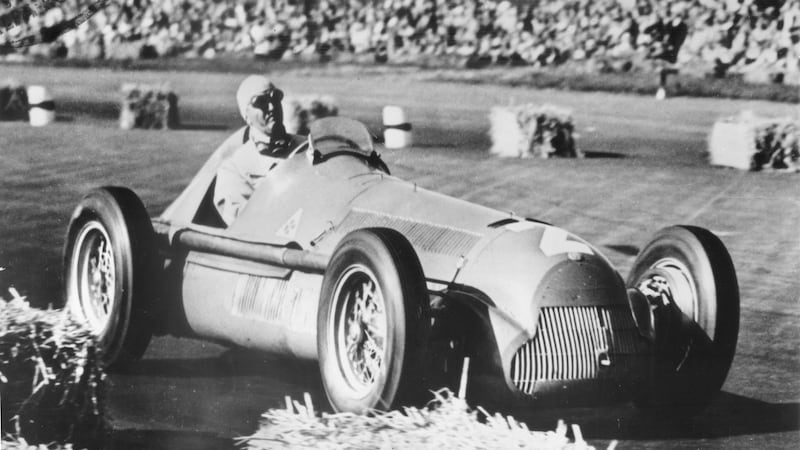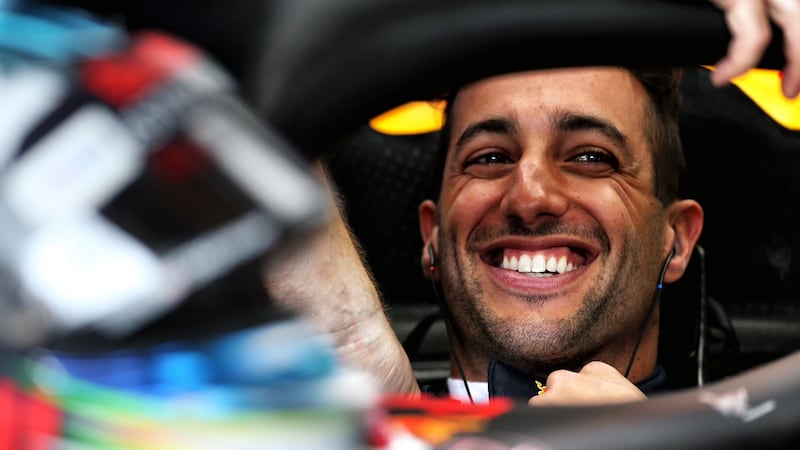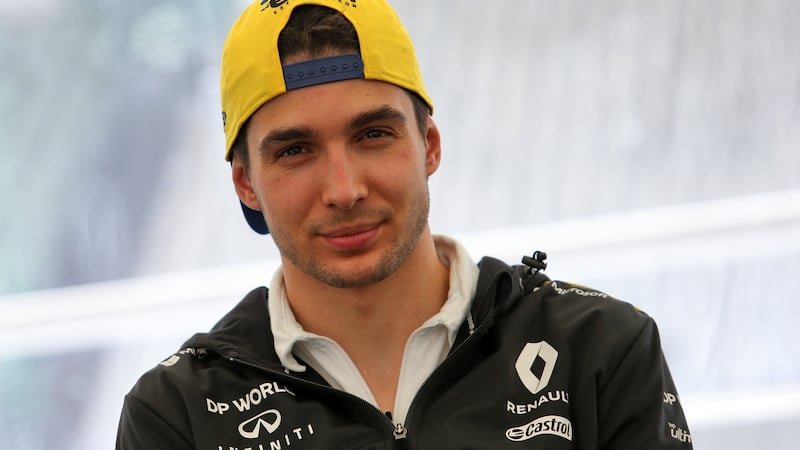Seventy seems like a good age. Many of us, maybe even most, can expect these days to live beyond three-score-and-ten, as the increasing number of nonagenarians would attest, but seventy still seems like a good number to have reached. Which makes it seem odd that, this year - this week, in fact - Formula One turns seventy. Odd, because seventy just doesn’t seem like the right age.
In some ways, F1 should be much older. After all, the Paris-Bordeaux-Paris road race of June 1895 is generally considered to be the world's first true, organised, competition for cars. The first race to officially be called a 'Grand Prix' was held at Le Mans, in 1906. Racing expanded in popularity and the public mind ever after, and there are those who say that the European Championship For Drivers, which ran intermittently from 1931 to 1939, was really the first, true world title.
Formula One, as a thing, as an agreed set of rules for running a true world championship, didn't officially start until 1950, though. That was the first year in which all of the cars entered had to conform to a specific set of rules (aside from the oddity that the American Indianapolis 500 was, technically, also part of the championship) and the first in which there was a world title for drivers to win. Italy's Giuseppe Farina, driving an Alfa Romeo 158 that was effectively a pre-war design, took the title that year.
0 of 3
It also seems odd that Formula One didn't officially begin between the monied kerbstones of Monaco, nor upon the flat-out sweeps of Monza. Instead, that first, proper, true, F1 World Championship race took place in a wind-swept field in Northamptonshire. Silverstone, a former Royal Air Force bomber base, was converted into a race track by combining the main runway with some of the perimeter track. Oil drums were used to divide the runway in two, so that cars could run up and down it in both directions, while the only safety equipment on show was straw bales.

Now, in 2020, Formula One is celebrating that beginning with a race dubbed the 70th Anniversary Grand Prix. As in 1950, it will be held at Silverstone, but while faint outlines of the original circuit can still be seen, the rest is all changed. The biggest change of all, arguably, is that the fans will not be present. Racing in the time of Covid-19 is a rather different beast.
"I think I think we're all dealing with it pretty well," Daniel Ricciardo tells The Irish Times. "F1 I think has done a good job. I'm just glad we can race. Not being able to race would would make us a little more stir crazy. So without the fans, it's obviously not as great for sure. But I would take this as we have it now, rather than nothing at all."
Ricciardo is, via the medium of a computer screen, tanned, slim, and sickeningly fit. His broad, toothy smile, which has become his trademark, is much in evidence in spite of the straightened times. "The biggest moment you miss the fans is in the lead up to the race, you know, the drivers parade when we're on the grid, when the anthems playing and everyone's cheering and clapping and chanting. You miss that. That energy, that atmosphere, that puts some butterflies in your tummy. So, that's hard and without fans Absolutely. Once we get in the car and put the helmet on we don't hear anything really with the speeds and the noise of the cars. But you also you kind of have tunnel vision, you know, you're not too aware of your peripherals around you other than the black bit of racetrack in front of you."
That black bit of track hasn't been the kindest to Ricciardo in recent years. Having set out his early career stall with Red Bull, where he effectively frightened four-time world champ Sebastian Vettel off to join Ferrari, Ricciardo found his own nemesis in the shape of youthful Max Verstappen. When it became clear that Red Bull was going to Focus on Max, Ricciardo jumped ship to rival Renault.

Except Renault wasn't really a rival. The second-oldest car maker in the world (depending upon whom you speak to) has often been a dominant force in world motor sports. Renault swept to victory in that first French Grand Prix in 1906, but wouldn't return to the top-table of racing until 1977. Then, it turned the sport upside down with its turbocharged engines, winning raced (but not titles) through the eighties. Then, in 1989, Renault introduced the first V10 engine to the sport, and serious dominance - powering cars built by Williams and Benetton - began. In 2005 and 2006, a full works Renault team - building both its own engine and chassis - took back-to-back titles with Fernando Alonso. Since then? Not so much. The team disappeared for a while, rebranded as Lotus, became Renault again, but has not found its old winning streak since. Mercedes, and Lewis Hamilton especially, is the dominant force in F1 right now.
"At the moment, we can't, fight Mercedes," Esteban Ocon, Ricciardo's team-mate and France's big hope for future F1 success told The Irish Times. "They are out of reach for us. It's a long term plan that we have to, of course, be able to fight for wins and podiums. At the moment we are trying to close the gap - slowly, slowly close the gap and get closer to them and to be able to fight with the top three. Our car is a lot better this year, and it's a big step compared to last year. So it's going into good direction, but all the other teams are working, working, so you need to work better than them. And that's a very difficult thing to do. So at the moment, we can't fight with Mercedes, but it is a long term plan that we have." Ocon is highly regarded by both peers and critics, and has the ear of legendary four-time world champ Alain Prost, yet the frustration in his voice is all to palpable. Mercedes seemingly has the 2020 title wrapped up before it has even got properly going.

There is hope for the future, though. A cost-cap comes into force next year, forcing teams to spend a ‘mere’ €175 million per season (it’s reckoned that the likes of Mercedes and Ferrari currently spend around double that amount) and it’s hoped that this will bring about a closing up of the field, allowing other teams to compete more fiercely. “It’s hats off to Mercedes - obviously they’re they’re in a league of their own right now, which is a bit frustrating for us and the sport, but we can’t be mad at them” Ricciardo tells The Irish Times. “I think with the cost caps and all this coming in, it should compress the field and the cars you know, the 2022 cars will be less aero-sensitive. That’s the big one as a driver, you know, being able to follow another car closely. That’s really where the sport lacks a little bit now.” Following more closely means more overtaking opportunities, and Ricciardo is acknowledged as the master overtaker.
I think with the cost caps and all this coming in, it should compress the field
Not that he will be doing so for Renault for much longer. This is Ricciardo’s second season driving for the French giant, but in 2021, he will switch to McLaren, which itself will be using Mercedes engines. Into his place comes a returning Fernando Alonso, fresh from a not-entirely-deliberate sabbatical. Will Alonso, his skills presumably undimmed, form a super-team with the hot-shot Ocon?
That will depend on Renault's ability to give them a car good enough to challenge the mighty Mercedes. Or, for that matter, a car at all. While budgets are about to be slashed by the cost-cap, Renault is staring down the barrel of an €8 billion loss this year (part Covid-related, partly to do with its shareholding of flailing Nissan) and while €175 million is chump change in comparison, it doesn't necessarily look good for a company to be literally racing in circles when it is also financially doing so. That won't be helped by the opinions of some within the company regarding F1. Once, when I asked a previous incumbent of the Renault Ireland chief executive's post why the company didn't make more of its F1 successes in a marketing sense, the response was: "Nobody cares about F1 in Ireland…" I begged to differ, but amongst the mass of car buyers, maybe he was right.
In 70 years, then, much has changed. The financial power of the sport has ebbed and flowed. Silverstone has risen from a tatty old airbase to a cauldron of high-tech competition, with matching fixtures and fittings. The cars are now staggeringly complex, as difficult to design as a rocketship, and with engines that now go faster than ever on less fuel than ever.
For Ricciardo, Ocon and the 18 other drivers sharing the tarmac with them, none of that really matters though. 70 years may have passed, but once the lights change, all that counts is being first. Age may have brought Formula One riches and technology, but it has not dulled the competitive edge.














